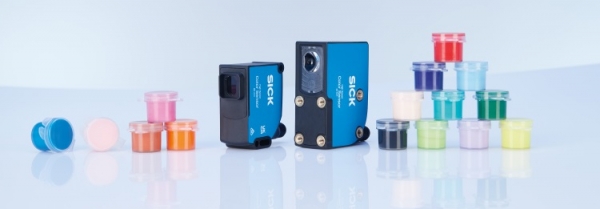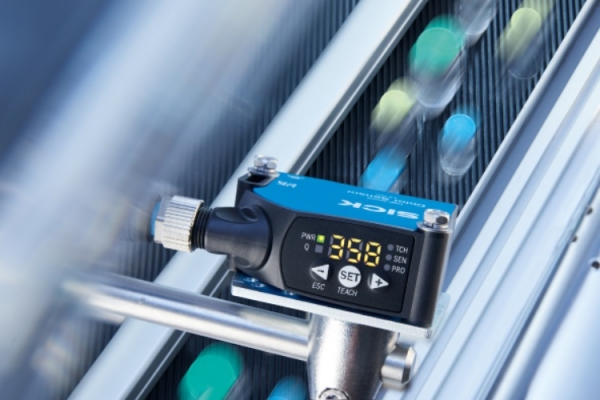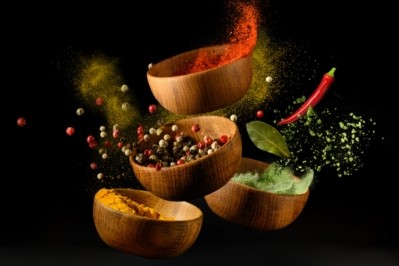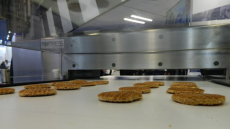Innovative colour sensors distinguish even the slightest nuances in shade
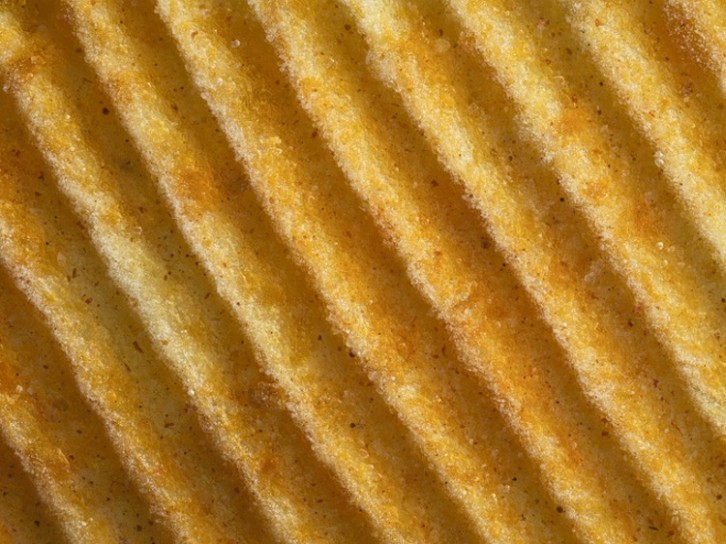
SICK’s CSS and CSX colour sensors help to achieve higher process speeds and higher throughputs with outstanding detection repeatability, for example, to differentiate packaging foils or assess the maturity level of fruit, the roasting degree of coffee and even the intensity of spice on a potato chip.
“SICK’s colour sensor portfolio has undergone a major overhaul, culminating in some of the best colour sensing capability currently available,” said David Hannaby, SICK’s market development manager for presence detection.
“These two devices now offer best-in-class performance, as well as combining unmatched colour recognition with ease of set-up and the ability to adjust the colour sensitivity precisely. The sensors are therefore ideal for wide-ranging colour sensing applications, such as colour verification for quality control, sorting and separation, as well as object and print mark positioning.”
SICK’s newly developed flagship CSS colour sensor leads the way with its ability to distinguish even the slightest nuances in shade. Its capability to identify subtle differences in surface structures and textures opens up wide-ranging applications in food and drink manufacturing.
The SICK CSS Colour Sensor detects colours precisely, regardless of the distance from the object. This unique distance regulation capability dispenses with the need for strict guidance of the target, automatically sensing distances on a production line to account for differing orientations of a product on a conveyor and to handle varying object sizes with ease.
“The automatic sensing distance regulation enables the CSS to detect colours reliably, despite the difference that changing distances have on the perceived colour; it can handle differences in distance between 50mm and 500mm with ease,” said Hannaby.
Capturing the perfect ripeness
Live L*A*B* or RGB (red, green, blue) colour values are displayed on CSS’s on-sensor full-colour display. An innovative teach-in method enables the sensor to assess the similarity between the detected colour and expected colour in real time.
The letters L*, A* and B* represent the three values the CIELAB (the International Commission on Illumination) colour space uses to measure objective colour and calculate colour differences. L* represents lightness from black to white on a scale of 0 to 100, while A* and B* represent chromaticity with no specific numeric limits. Negative A* corresponds with green; positive A* = red; negative B* = blue; and positive B* = yellow.
Up to 15 colours can be output directly via the sensor’s four switching outputs. The SICK IO-Link CSS Colour Sensor - which can be precisely configured using the setup assistant in SICK’s SOPAS software - also offers the capability to output up to 24 colours to a machine controller.
CSS goes far beyond sensing homogenous colours, opening up a wide field of applications, and is an even an attractive alternative to expensive colour measurement devices.
“Using the CSS sensor’s colour verification capabilities, we can check for the right shade and structure of a product, be it the right colour shade of a logo or the ripeness of a piece of fruit,” said Hannaby.
“Using the new multi-value teach-in method, it’s easy to teach in material with structure, such as stone, wood, fabric or leather and get a reliable result.”
High speed
With a switching frequency of 13.8kHz, the SICK CSX High Speed sensor works at double the pace of its predecessor device, while still offering full mounting compatibility for direct replacement. As well as typical applications such as the detection of colour marks, labels and splices, the CSX now masters new high-speed production tasks such as rapid sorting of objects according to colour.
